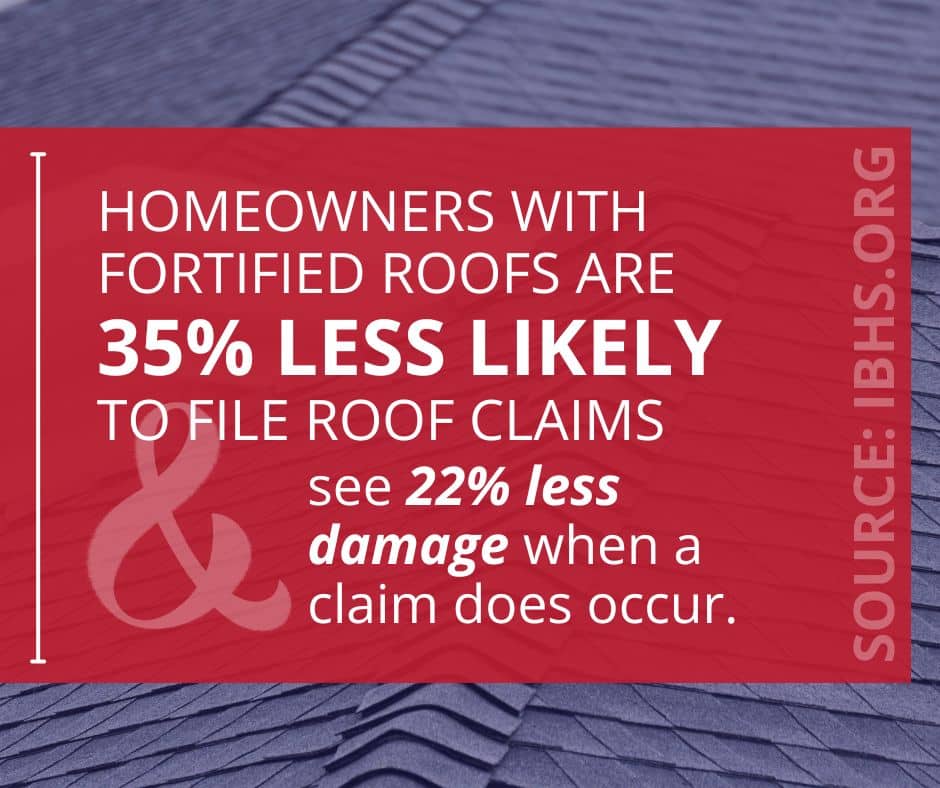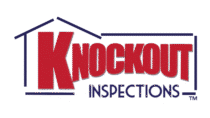Living in an area prone to hurricanes, heavy winds, or other extreme weather can be stressful, especially when it comes to protecting your roof. That’s where a FORTIFIED roof comes in, designed to provide long-term protection. The upgrade not only shields your home from severe weather but also adds value to your property.
From high winds and storm damage to simple roof longevity, this guide will show you everything you need to know about FORTIFIED roofing. You’ll learn what sets a FORTIFIED roof apart, the numerous benefits, and how to determine if your home is a good candidate.
FORTIFIED Roofing Explained
A FORTIFIED roof is a roofing system specifically engineered to provide superior protection against extreme weather.
While all roofs offer some degree of defense, a FORTIFIED roof goes beyond the standard. It reinforces key areas to better handle the forces of high winds, heavy rain, and storms. This added protection is especially important for homes in regions frequently affected by hurricanes, tornadoes, or other severe weather events.
The primary goal of a FORTIFIED roof is to minimize damage and safeguard your home, preventing costly repairs and maintaining the structural integrity of the building.
This roofing upgrade also increases the longevity of the roof, giving homeowners peace of mind that their home is better prepared for whatever nature throws its way.

What Specifics Set It Apart?
A FORTIFIED roof is built with upgrades in four key areas that work together to increase storm resistance and reduce long-term damage.
Stronger Decking
The roof deck is the base layer under your shingles. FORTIFIED systems use thicker materials and attach them with tighter spacing between nails, creating a more solid foundation that holds up better under high winds and flying debris.
Better Sealing
Sealing layers are added directly to the decking to block water from getting inside if the shingles are damaged. This helps prevent leaks during storms and keeps moisture from rotting the structure underneath.
Locked-In Edges
Edges and corners are where wind pressure is the strongest. FORTIFIED roofs use metal flashing, reinforced fascia, and other edge-specific fasteners to lock everything in place so the roof doesn’t peel up or break apart.
Better Vents
Standard roof vents can easily be ripped off in strong storms. FORTIFIED vents are designed to stay put and block water from entering, even during wind-driven rain or high-pressure events like hurricanes.
Is Your Home a Good Match?
Not all homes require or qualify for a FORTIFIED roof. However, if you live in an area prone to extreme weather, it’s a smart investment. Homes located in coastal regions, hurricane zones, or areas regularly affected by strong winds, tornadoes, or heavy storms benefit the most from FORTIFIED roofing.
Consider the following factors when deciding if your home is a good candidate:
- Location: If your home is in a region with frequent severe weather events, such as the Gulf Coast or Southeast, a FORTIFIED roof provides crucial protection.
- Roof Condition: Homes with aging or damaged roofs may be more vulnerable to storm damage. If your roof is nearing the end of its lifespan or has been through multiple storms, upgrading can prevent future issues.
- Home Structure: The design and structure of your home can also affect how well it stands up to extreme weather. FORTIFIED roofing is especially beneficial for homes with complex rooflines or older homes that may not have been built to modern wind resistance standards.
If you’re unsure or haven’t had a professional inspection of your roof in a while, an expert assessment can help plan your best steps.
Is It Worth the Investment?
Yes. The numbers back it up. A FORTIFIED roof isn’t just a stronger roof. It’s a smarter long-term investment that can reduce both storm damage and insurance risk.
Homeowners with FORTIFIED roofs are 35% less likely to file roof-related claims. When they do, they see an average of 22% less damage than standard roofs.
That translates to fewer repairs, lower out-of-pocket costs, and potentially better insurance premiums, especially in storm-prone areas.
But the real value goes beyond claim data. FORTIFIED roofs also:
- Protect home value by preventing structural damage that can be hard to spot until it’s too late
- Help qualify for wind mitigation credits in many coastal states, including Florida
- Improve peace of mind knowing your home is built to resist extreme weather from day one
While the upfront cost of a FORTIFIED roof can be slightly higher than a traditional roof replacement, the long-term savings and resilience benefits often outweigh that initial difference (especially after just one major storm season).
Timeframe
The installation timeline for a FORTIFIED roof depends on the size, shape, and condition of your existing roof. On average, most projects take 3 to 7 days from start to finish.
Simpler roofs on smaller homes with straightforward layouts and newer materials may be completed more quickly. Larger homes, or those with complex angles, existing damage, or added reinforcement needs, may take longer.
Weather can also impact scheduling. Certified inspectors and installers will keep you informed at each step, making sure the work meets FORTIFIED standards and is done right the first time.

Related Questions Worth Noting
Does a FORTIFIED Roof inspection include the rest of the house?
No. The evaluation focuses only on the roof unless you’re upgrading to Silver or Gold. Knockout offers full home inspections separately if needed.
Can I get FORTIFIED certification during a standard home inspection?
No. FORTIFIED inspections follow a separate process and must be scheduled before or during a reroof project.
What if my roofer isn’t FORTIFIED certified?
That’s okay. Your roofer doesn’t need to be certified, but the installation must follow guidelines and be verified by an approved evaluator.
Do I need a FORTIFIED inspection after every storm?
Not always, but it’s smart to schedule one after major wind events, especially if you’re due for renewal or suspect damage.
When to Call a Professional
Sometimes, it’s easy to tell when your roof needs attention, but other issues aren’t as obvious. Knowing when to call a professional can save you from larger problems down the road.
- Visible Damage: Missing, curling, or cracked shingles are signs that your roof is no longer properly sealed and needs repair.
- Water Stains: Water stains on your ceilings or walls could be a sign of a roof leak.
- Roof Age: Most roofs last about 20 years. If your roof is approaching this age, it’s a good idea to schedule a professional inspection.
- Post-Storm Inspection: After any major storm, it’s a good idea to have your roof inspected. Wind and rain can cause subtle damage that isn’t immediately noticeable but could lead to bigger problems over time.
A roofing expert can assess the condition of your roof, recommend repairs or upgrades, and ensure it’s ready to protect your home from the next storm.
Final Thoughts
A FORTIFIED roof is one of the best investments you can make for your home. That’s especially true if you get frequent severe weather.
Knockout Inspections is here to help. Our job is to empower you with informed decisions for your home with an expert eye. Schedule services online or call today to see how we can help.

